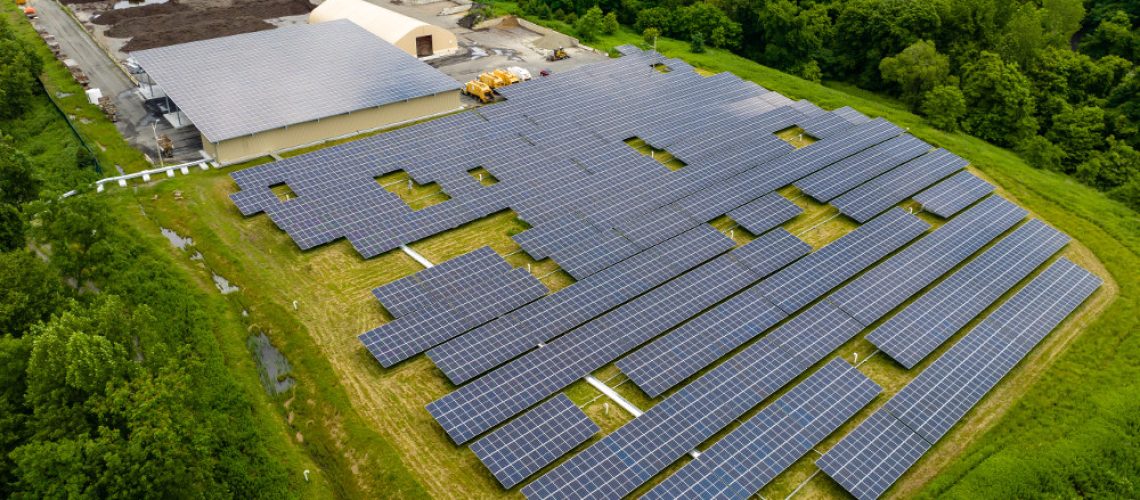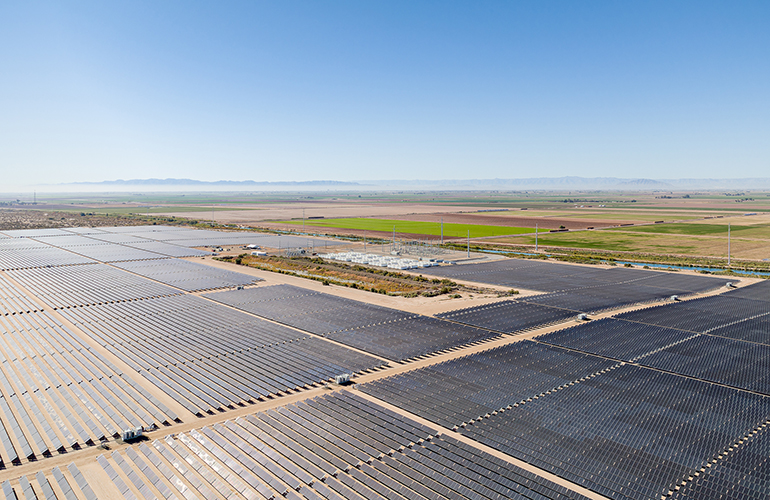DSD Renewables recently secured $155 million in debt financing for the first commercial and industrial (C&I) solar asset-backed securitization (ABS) with a significant concentration of community solar assets. The transaction, which is DSD’s first issuance of asset-backed securities, was structured and underwritten by Credit Suisse Securities (USA) LLC.
Solar asset-backed securities represent a growing opportunity to package assets originated by solar developers into diverse portfolios and offer opportunities for investors to deploy capital into renewable energy at scale. DSD’s ABS portfolio consists of about 56% onsite solar and 44% community solar, including C&I and distributed generation projects across 11 states, with offtakers benefiting from decreased electricity costs and state solar incentive programs.
“This transaction is an important step in DSD’s mission to accelerate the deployment of renewable energy,” said Jamie Hutson, DSD’s chief investment officer. “We have established a path to market for a substantial inclusion of community solar, which will enable access to clean, affordable energy for a larger pool of customers.”
What is ABS?
Ian Manchester, VP of structured finance at DSD, explains that an ABS loan is a more efficient finance vehicle that offers a more permanent long-term debt option. It’s a type of investment that uses an underlying pool of assets for collateral, usually those that generate a cash flow from debt, such as loans, leases, credit card balances or receivables.
“This deal opens up the capital market to different investor-based financing, instead of the typical way projects are financed,” Manchester says. “ABS financing is common for residential and utility-scale projects. But middle market solar, like C&I, is pretty new to ABS take out. To our knowledge, this is the second to be C&I, but the first with such a large volume of community solar, which represents almost half of the portfolio.”
For a solar developer, ABS financing offers a further method of diversification. Instead of a portfolio with just one offtaker, there is diversified risk with more offtakers.
“If something goes wrong with one of them, it’s only a small percentage of the investment,” Manchester says. “It’s also another risk mitigant for community solar. Instead of having one anchor offtaker, there are thousands of other subscribers.”
Manchester calls the ABS financing model a “huge step forward” for community solar projects.
“One of the big things with this project is it sets a precedent for the rating agency,” Manchester says. “Now that we set a precedent, if another developer wants to, they can take the ABS approach to financing their community solar project. It’s good for DSD, but it also benefits other developers.”
Another benefit of a more robust ABS market for community solar projects is that it could lead to better terms for subscribers and project offtakers in the future.
“In theory, if the ABS market continues to be an efficient method of financing projects, and if it was factored into the underwriting in the origination states, you could pass further savings down to subscribers,” Manchester says, but with a caveat: “We need more data to verify.”
Proving the model
Being DSD’s first ABS, its structured finance, community solar and legal teams partnered with outside counsel and third-party consultants to educate the investor community on C&I solar, particularly community solar. As one of the first solar securitizations to include a significant portion of community solar, DSD worked closely with agencies and investors to better understand community solar revenue structures and to adequately assess risk through a data-driven approach.
This process will streamline DSD’s next issuances, and serve as an emulative industry model for other issuers to bring community solar assets to the debt capital market, Manchester said.
“As a first-time issuer within a newer asset class, it was critical that we considered all relevant risk and strategized with agencies, consultants and our bankers to ensure an optimal outcome,” Manchester said. “With our first securitization under our belt, we look forward to future issuances which will continue to drive commercial solar adoption and widen access to community solar projects.”
Net proceeds from the transaction, which was announced Dec. 15, will be used to pay down existing debt on DSD’s assets and support its business growth on the project origination and acquisitions front. Credit Suisse acted as Sole Structuring Agent and Sole Bookrunner for this transaction. Sidley Austin LLP acted as counsel to DSD, and Mayer Brown acted as counsel for Credit Suisse.
DSD combined C&I and community solar into its ABS deal to help ease concerns from the financing sector, Manchester says. It helped the financial sector “dip their toe in the waters” of community solar without as much risk.
“To our development team, in terms of getting permits and approval, community solar and C&I projects look the same,” Manchester says. “For DSD, it’s easy for us to play in both markets, and we have a nice mix of both types of projects. At the end of the day, combining them in this deal came down to diversification.”
Having C&I as a larger percentage of the ABS deal helped show the security of the investment. However, the impact on the community solar business is significant, Manchester says. Going forward, DSD expects to have a 50/50 split between C&I and community solar projects.
“For us, it’s definitely a matter of now that the concept is proven, the financing companies understand what we’re doing,” Manchester says. “I’m looking forward to the next transaction from the efficiency side. Both in terms of timing and cost, the process should be much easier than the first time. I’m curious how quick we’ll be able to get it done.”
Over the next couple of years, Manchester anticipates DSD to be able to secure two to three ABS issuances per year.
“The more those types of deals work out, the more we’ll be able to go back to negotiate additional financing,” Manchester says.
DSD’s experience with this ABS financing provides an example for other developers to follow.
“This serves as a proof of concept,” Manchester says. “The industry can now have a higher degree of confidence in these types of deals. Generally, this is a small industry, and we know a lot of other small developers. We have some efficiencies to be shared. It’s not about competition, but let’s try to grow the industry together. We believe we’re doing the right thing. It’s about what can we do to make the process as efficient as possible.”
Brad Kramer is managing editor of Solar Builder.
Tags: C&I, commercial and industrial, Community Solar, DSD Renewables, Financing






